
views
Understanding Traffic Signs and Lights
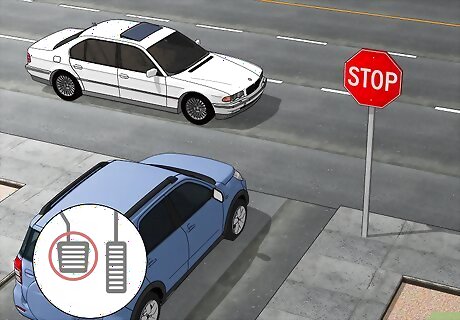
Brake when you see a red, octagonal "STOP" sign. Stop signs look the same across the U.S. Whenever you see one of these familiar red signs with the word "Stop" in white, bring the car to a complete stop. Just slowing down doesn’t count! At a four-way stop, the car that arrived first has the right of way. You may have a stop sign, but that doesn’t necessarily mean that oncoming traffic also has one. Use caution whenever you’re making a turn or crossing the road. Signs will look different in each country, so check into the specifics if you're driving somewhere new. For example, signs in the UK might sometimes say "Halt" instead of "STOP".
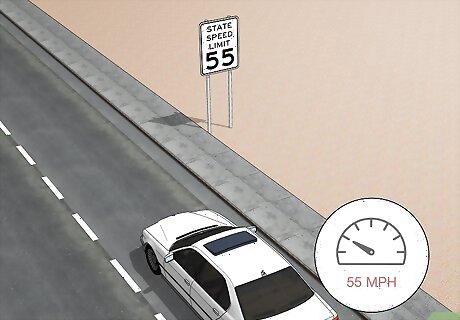
Drive at the posted speed limit. Speed limits vary, so you need to pay attention to the signs while you are driving. Most signs will indicate the speed limit, and some will also include a minimum speed. These signs are generally white with black numbers and letters. Stick to the speed limit or you risk getting a ticket. Check the manual for the car to learn how to switch the speedometer from miles to kilometers if you are driving an American car in another country.
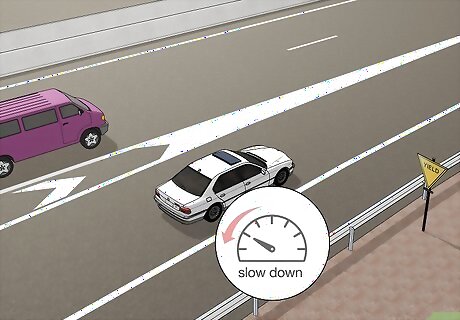
Slow down if you see a triangular sign. Yield signs can be yellow or white, and they are important to obey. This sign means that you should proceed with caution and check both ways for incoming traffic. If you don’t see any, you’re all set to proceed. There are not standardized signs amongst countries, so always ask what signs mean if you're in a different country than usual.
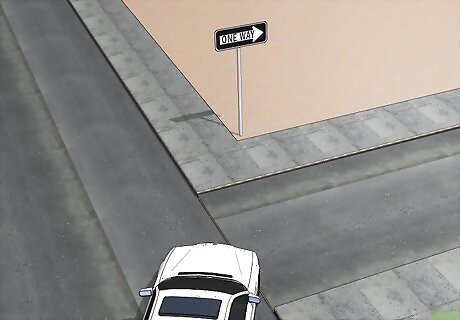
Follow the arrow on one-way signs. If you see a black arrow on a white sign, that means that travel is only allowed in the direction that the arrow is pointing. These signs are typically thin and rectangular, and are usually black and white. If you accidentally turn the wrong way down a one-way street, drive with caution until you can find a safe spot to turn the car around. In the UK, the sign might be an arrow the points the opposite direction of what is allowed with a red circle with a slash over it. It's kind of the opposite of the US sign.
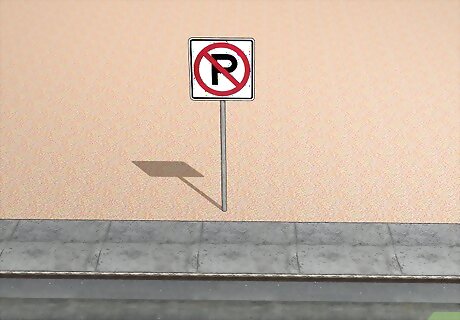
Look for nearby signs when you park. There are lots of different parking regulations, but make sure to check for the common "no parking" sign. It is typically a capital P with a red circle and a slash mark through it. If you see that, find somewhere else to park. Make sure to carefully read any signs that indicate restricted parking. Some signs might indicate certain hours where parking is not allowed, or even include time limits on parking.
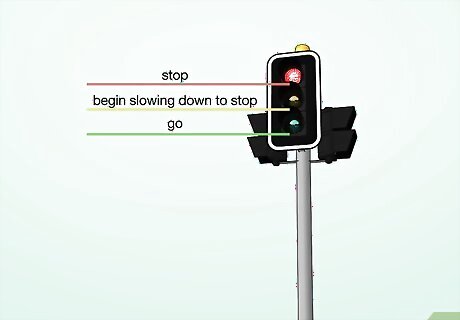
Obey the signals when you see a traffic light. If you’re in an urban or busy area, you’ll probably run into lots of traffic lights. When you come to a light, remember: Green means go, yellow means to begin slowing down to stop, and red means stop. You can turn right on a red light as long as there is not a sign prohibiting it and it is safe to do so. Just make sure to come to a complete stop and check for cars and pedestrians before turning. However, never turn left at a red light. Make sure to learn about traffic lights if you're going to be driving in a new country.
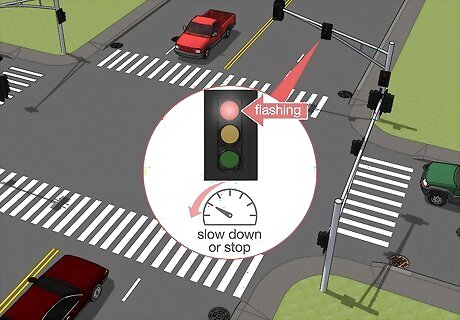
Slow down or stop at flashing lights. Flashing yellow lights means you can proceed with caution, so slow down and check for oncoming traffic. When you see a flashing red light, come to a complete stop. These lights are treated as a four-way stop, so allow any vehicles that arrived before you to go first. You can proceed when it is your turn and incoming traffic has stopped.
Observing the Markings on the Road

Stay in your lane when you see a solid white line. In most places in the U.S., there are lines painted on the road. It’s important to pay attention to them while driving. If you see a solid white line, that means that you can’t change lanes to pass another car. White lines separate lanes of traffic that are traveling in the same direction. If the white line is broken (it looks like it’s made up of dashes), you can carefully change lanes. Different countries might have different road markings, so check out the rules before you drive in a new country.
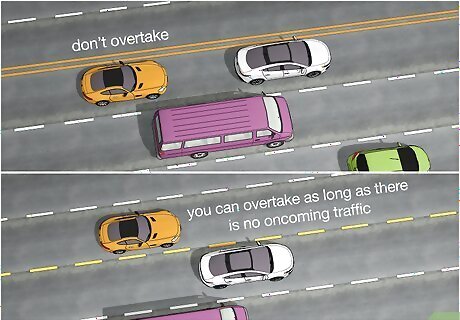
Use caution when you see yellow lines. A broken yellow line means you may pass carefully, as long as there is no oncoming traffic. But if you see a solid or double yellow line, stay in your lane. Those lines indicate that you shouldn’t change lanes.
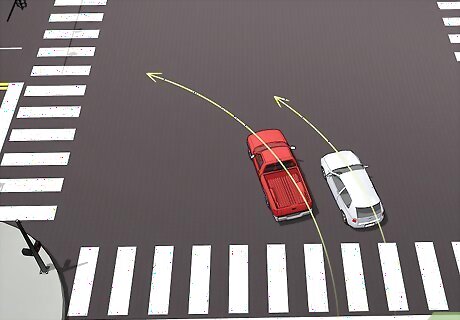
Pass and turn carefully when it's safe to do so. Always check for oncoming traffic when you pass or turn, no matter what the road markings mean. Even if you’re allowed to pass or turn, it doesn’t always mean it’s safe to do so. Use caution while obeying some of these basic rules: Use the left lane to pass a car going in the same direction. Avoid passing from the right lane. Use your turn signal each time you turn or switch lanes. Pay attention to road signs that prohibit turning and obey those rules. Most of this is typically true wherever your drive, but it never hurts to check out the rules of the road when you drive in a new country.
Sharing the Road Safely
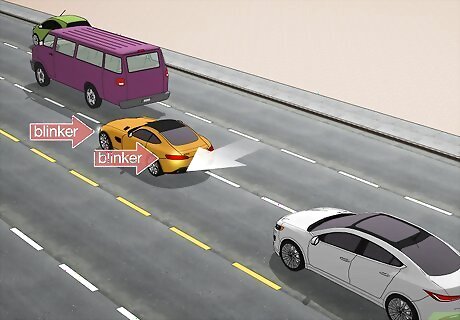
Turn on your indicators to make a turn or pass. Typically called blinkers or turn signals, indicators are lights on your car that let others know that you are turning or passing. Flip the indicator up to turn or pass right and press the lever down to indicate a left-hand turn or pass. Turn on your blinkers about 100 ft (30 m) before your turn in order to give other drivers advance notice.

Keep an eye out for motorcycles, pedestrians, and cyclists. Since motorcycles are much smaller than cars, they can be hard to see. Always check your side and rearview mirrors before passing or changing lanes so that you spot any nearby motorcycles. You should also look for cyclists riding their bikes. They have the right to bike on the street, so always look around for bikes before turning, backing out, or crossing the street. Pedestrians always have the right of way, so yield to anyone you see crossing the street.
Pull over for emergency vehicles. This is standard procedure in the U.S., although different states might have different specific regulations. In general, if you see or hear an emergency vehicle (like a police car, ambulance, or fire truck) you should slow down and pull over to the side of the road. If you are on the freeway and you see an emergency vehicle with flashing lights on the shoulder, carefully switch to the lane furthest away, if possible. Some states and countries might have rules such as moving out of the way for wreckers or snowplows, for example.
Driving Internationally

Know the basic setup of the car and the road. If you’re in the U.S., the steering wheel will be on the left side of the car and you’ll drive on the right side of the road. However, in many other countries, you might drive on the left side of the road. If you’re traveling somewhere new, check to see what side of the car people drive on. Whenever you drive an unfamiliar car, take a few minutes to learn where everything is. Check the blinkers, wipers, and other controls to make sure you know how to work them. Understanding your car will help you drive safely and follow the rules.

Look online to find rules for where you will be driving. This is the fastest, easiest way to find the information you want. Do a basic internet search to look up the guidelines that you need. Select a site that has lots of resources, such as a manual, a FAQ page, and contact information if you have questions. Spend some time going over the materials that you find so that you can start learning the rules. If you are going to be traveling to Ireland, for example, you could search for “traffic rules in Ireland.” Even if you’re an experienced driver, you need to familiarize yourself with the rules of wherever you will be driving. Every place has different regulations.

Ask for help if you don’t understand something. If you didn’t have time to study before driving somewhere new, it’s okay. Ask a local if there are any special rules that you should know about. It’s always better to be safe than sorry, so if you’re not sure if you’re prepared to obey the rules, don’t drive.
Finding Helpful Resources
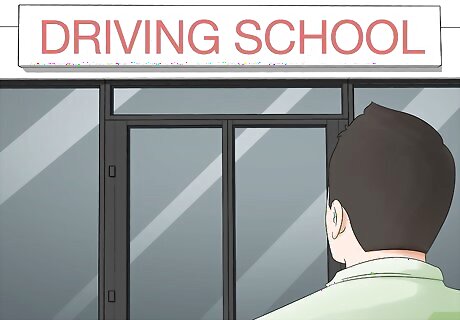
Enroll in driver’s education with a certified instructor. If you’re a new driver or are worried that your skills have gotten rusty, sign up for a driver’s ed class in your area. The DMV might be able to recommend some courses, so check with them. You can also search online for a driving school near you. These courses aren’t free, but they are generally pretty affordable. If you’re a teenager, check to see if your school offers driver’s education classes. Check the rules in your state. Some states require you to complete driver’s ed before you apply for a license.
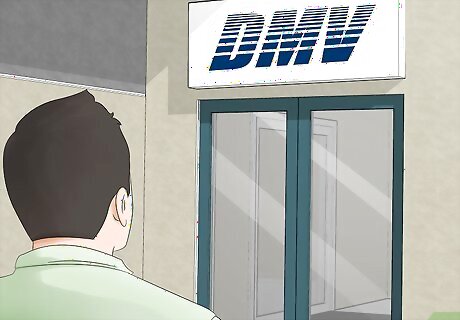
Stop by the local DMV for a study guide. If you want a hard copy study guide, you should be able to get one from the DMV (if you’re in the U.S.). Look up the location for the one nearest you and go in and ask for a manual. You can also check to see if they have other materials, like practice tests. If you’re not in the U.S., you can search online for the agency that handles driver's licenses. They should have resources to give you. You can also download and print the materials that are online if hard copies work best for you.
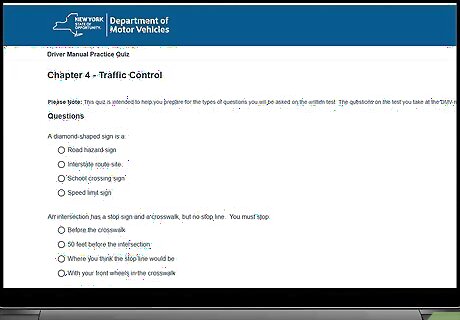
Take practice tests online to quiz yourself. Most websites have sample tests available. After you’ve spent some time studying the rules, test your knowledge by trying the practice tests. Keep trying until you receive a passing score. That will indicate that you’ve learned the rules of the road!
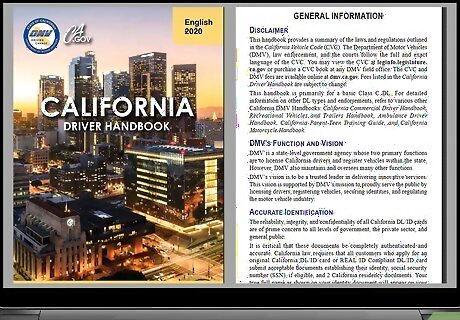
Search for specific state guidelines if you’re traveling in the U.S. The basic rules within the U.S. are pretty similar no matter where you are. However, each state usually has a few rules that are different, such as varying speed limits. If you’re traveling or moving to a new state, take some time to look online for guidelines about each state you’ll be in. Do a basic internet search like “traffic rules in Texas.” If you’re a new driver, concentrate on the rules for the state where you will take the test to get your license. Plan to start studying a few months before you want to take the test. You don’t want to have to cram the information at the last minute.















Comments
0 comment